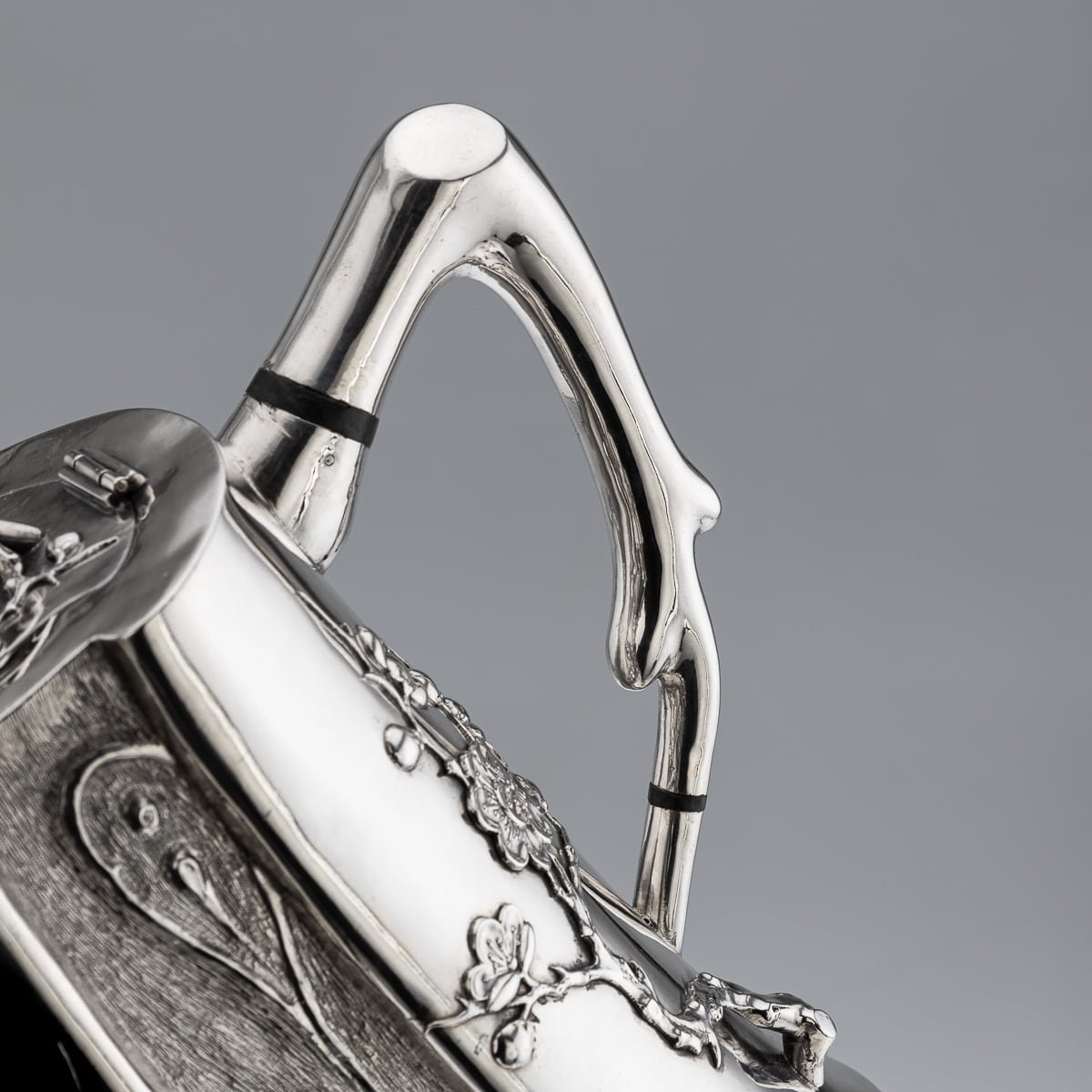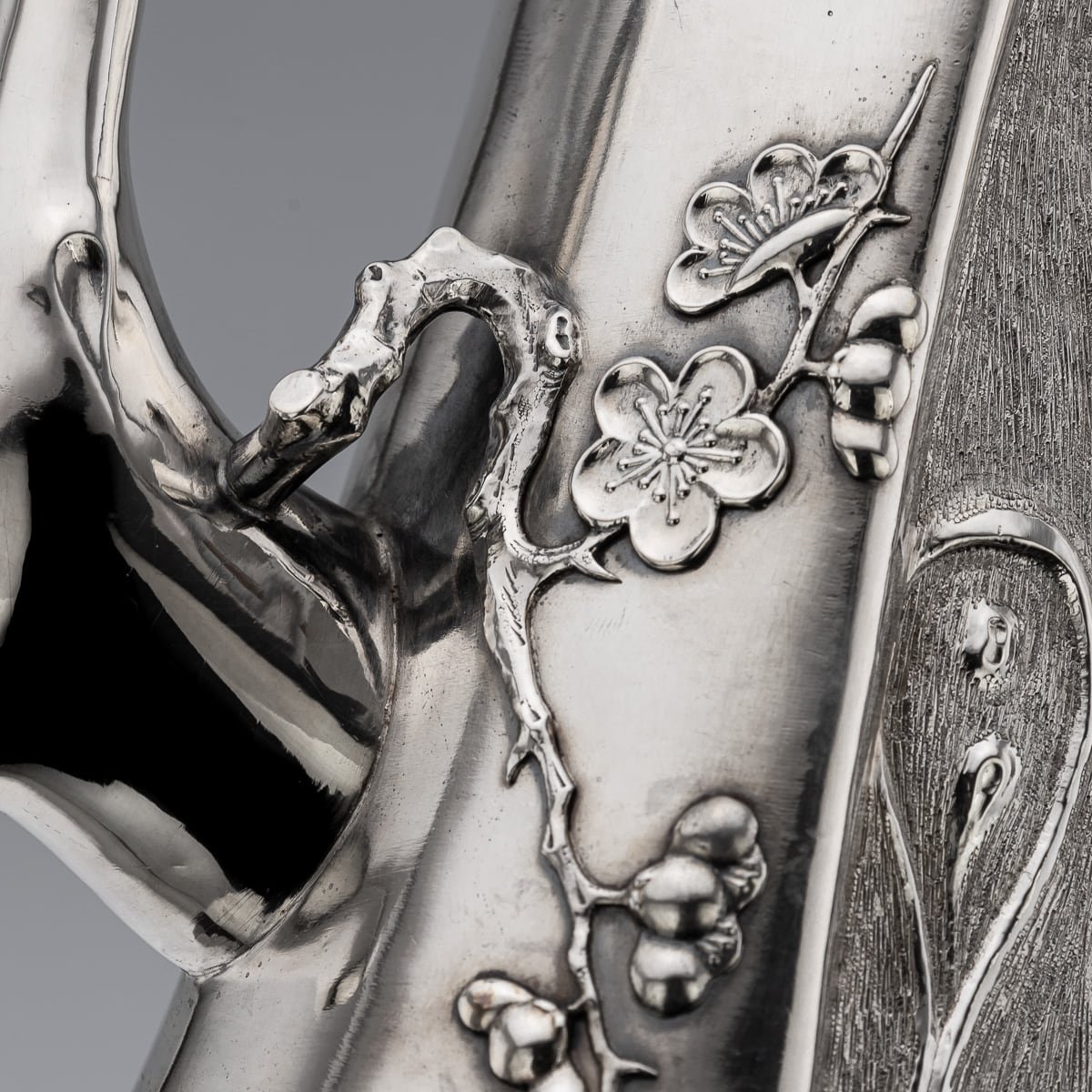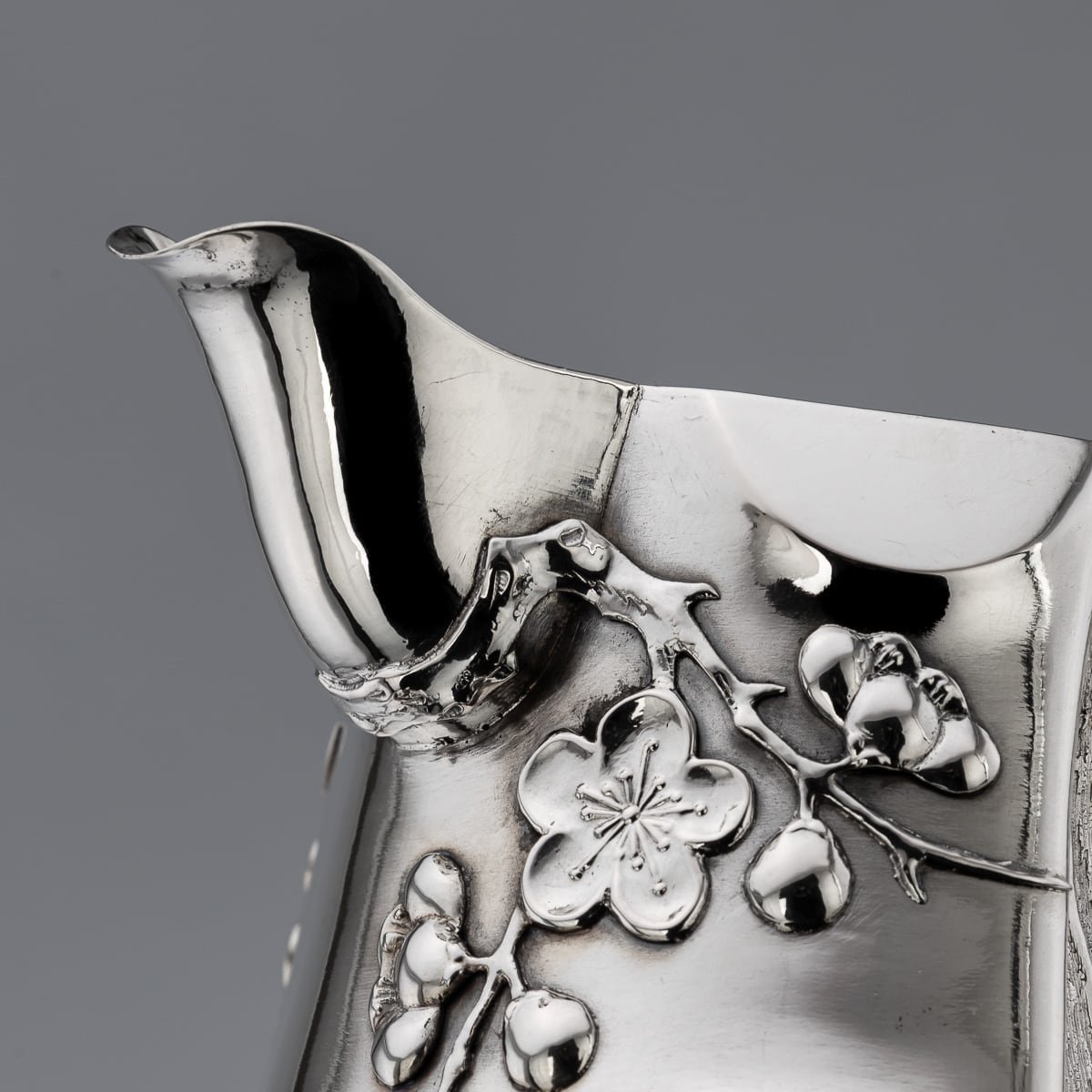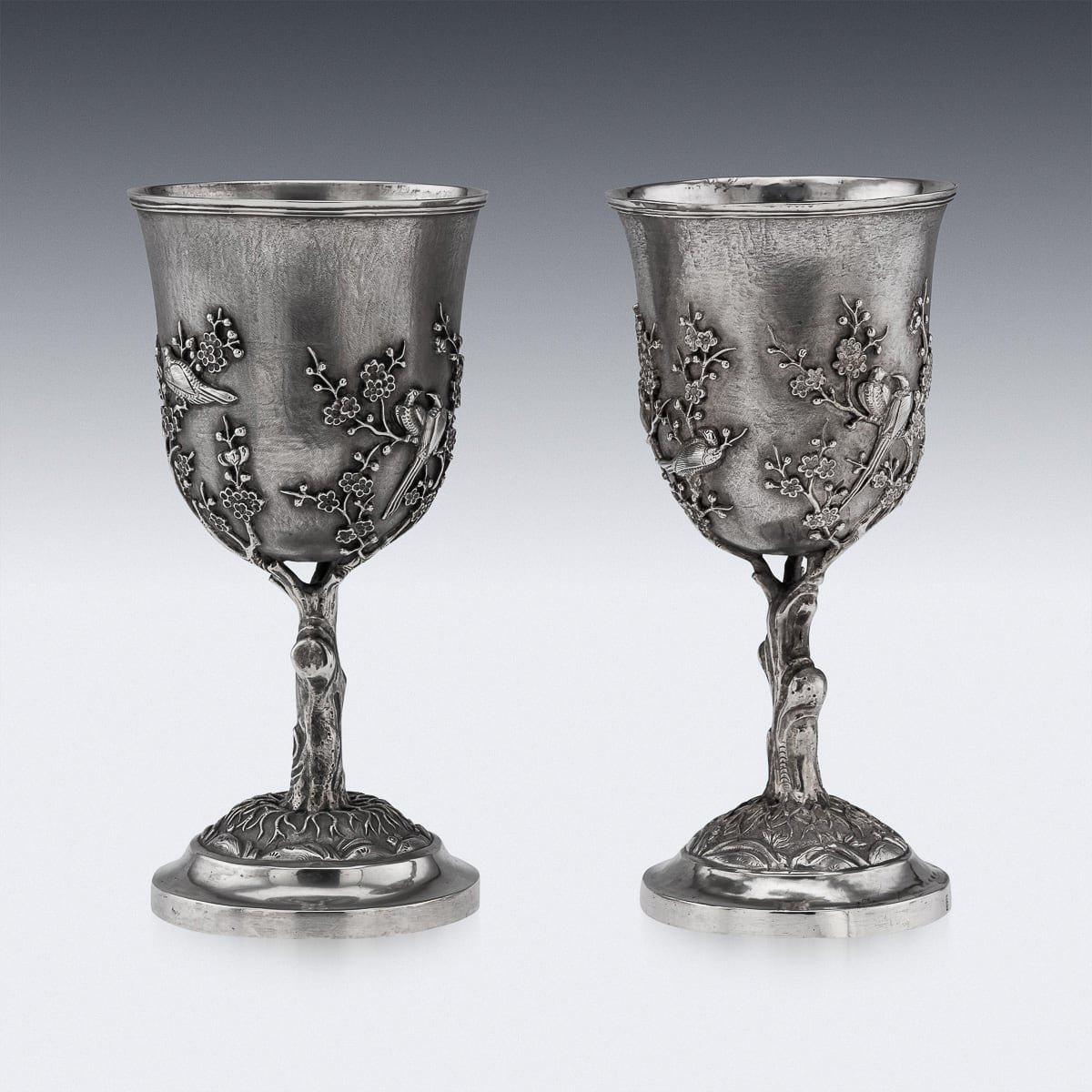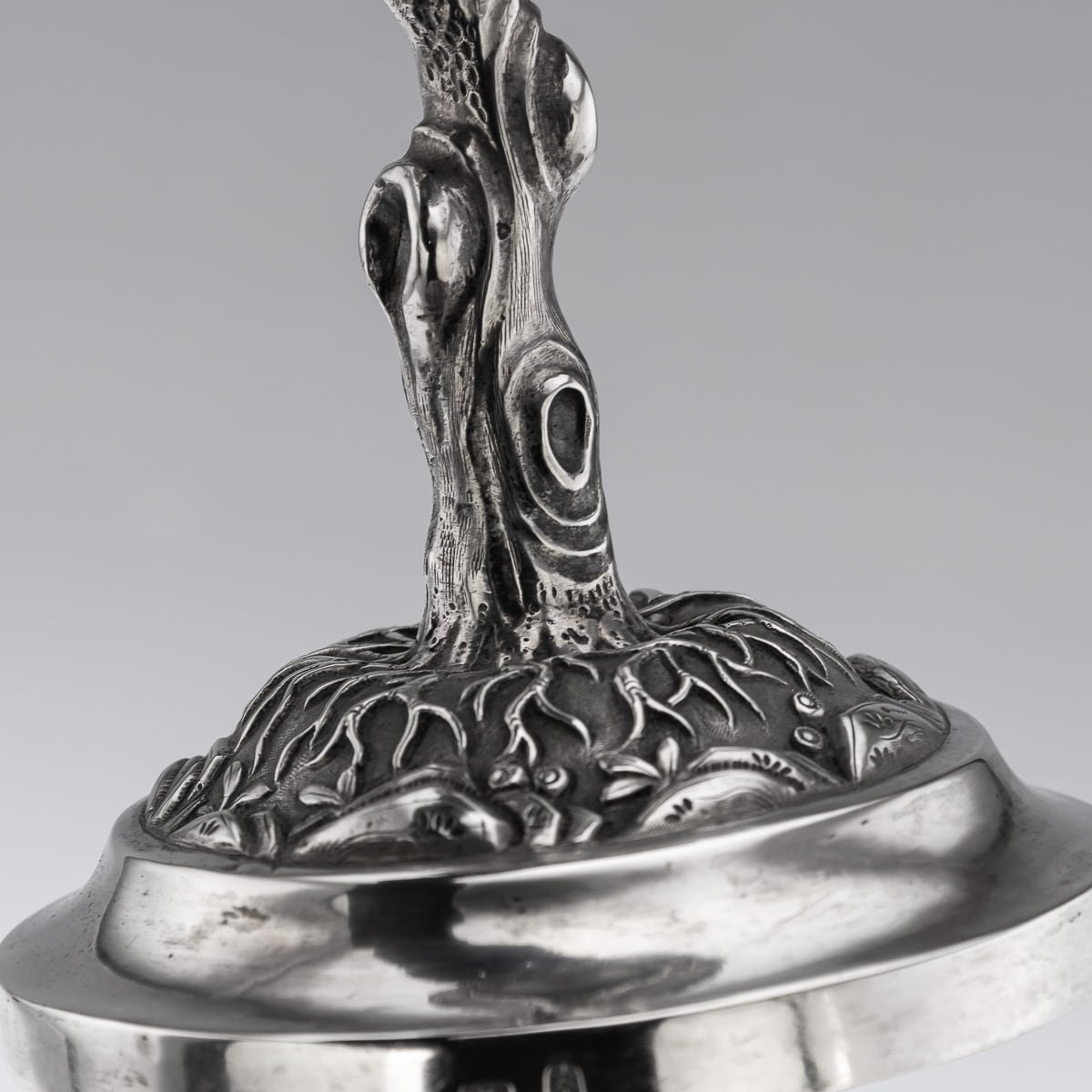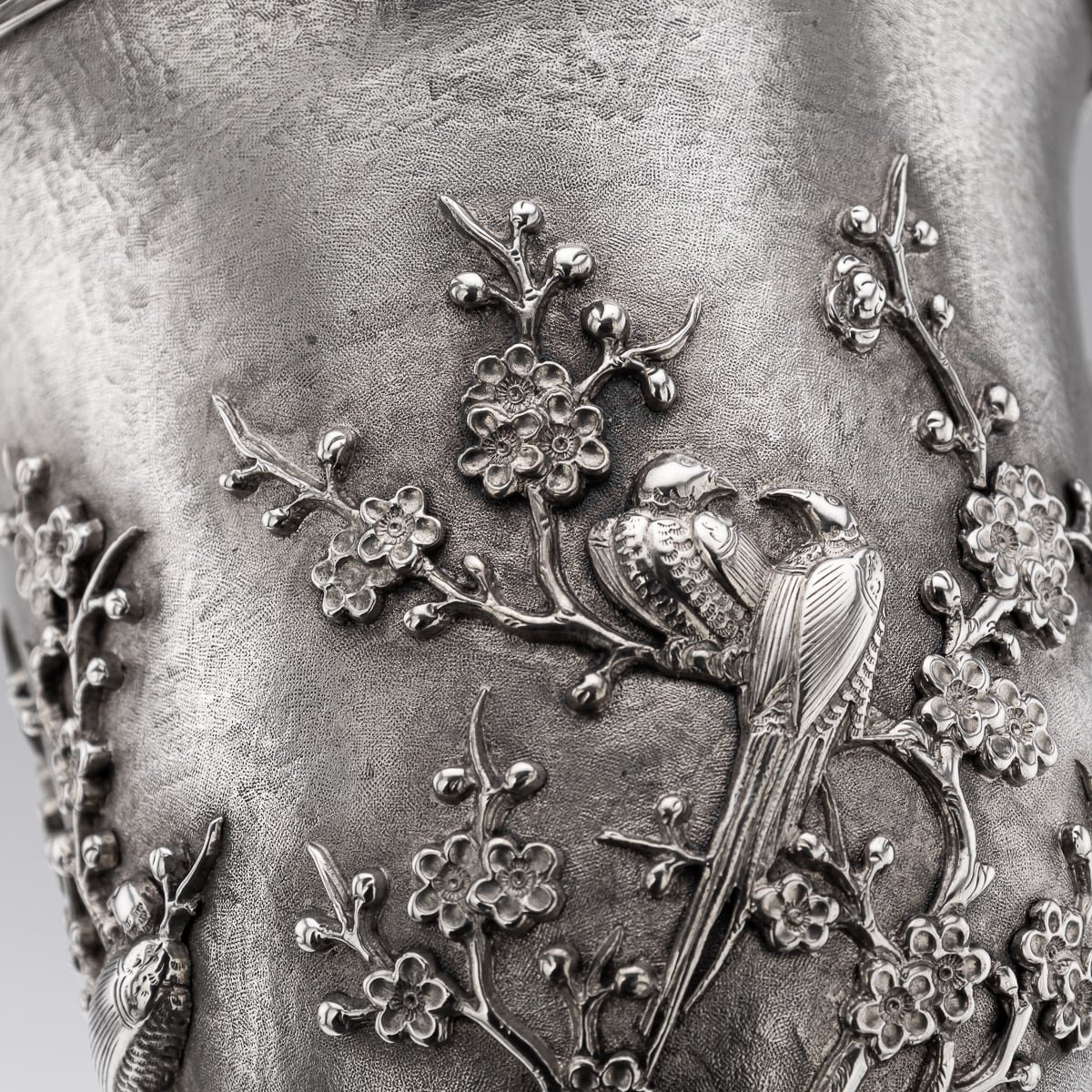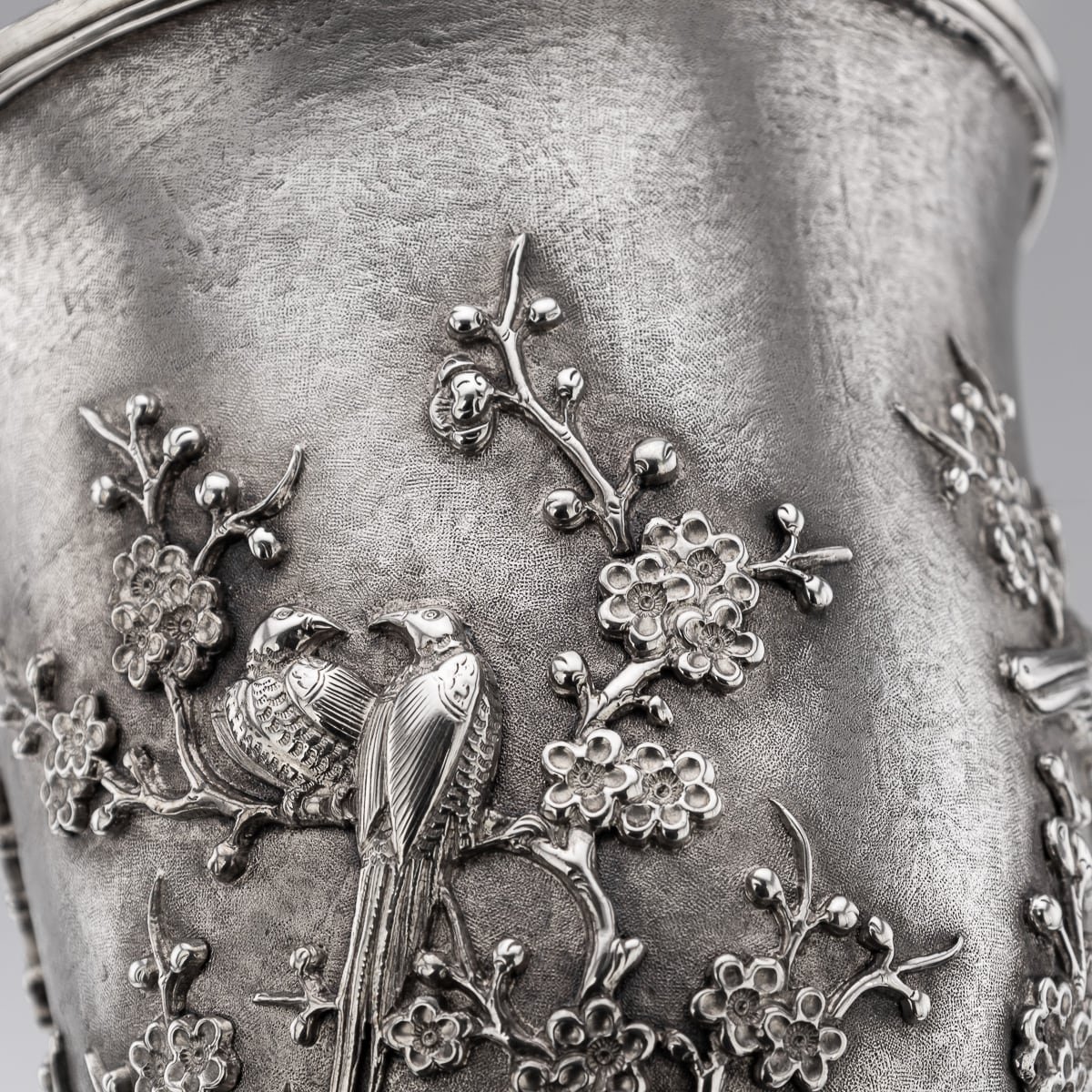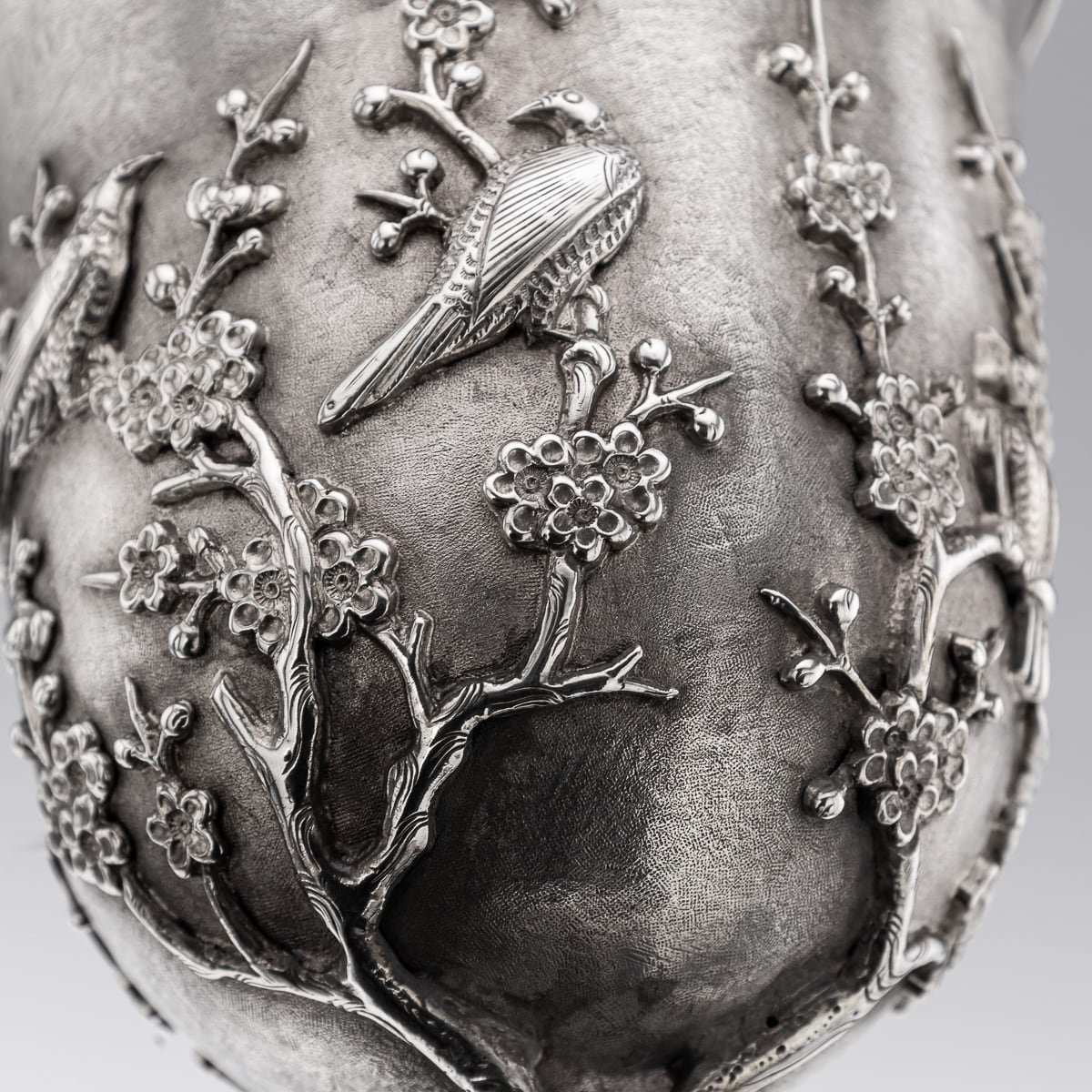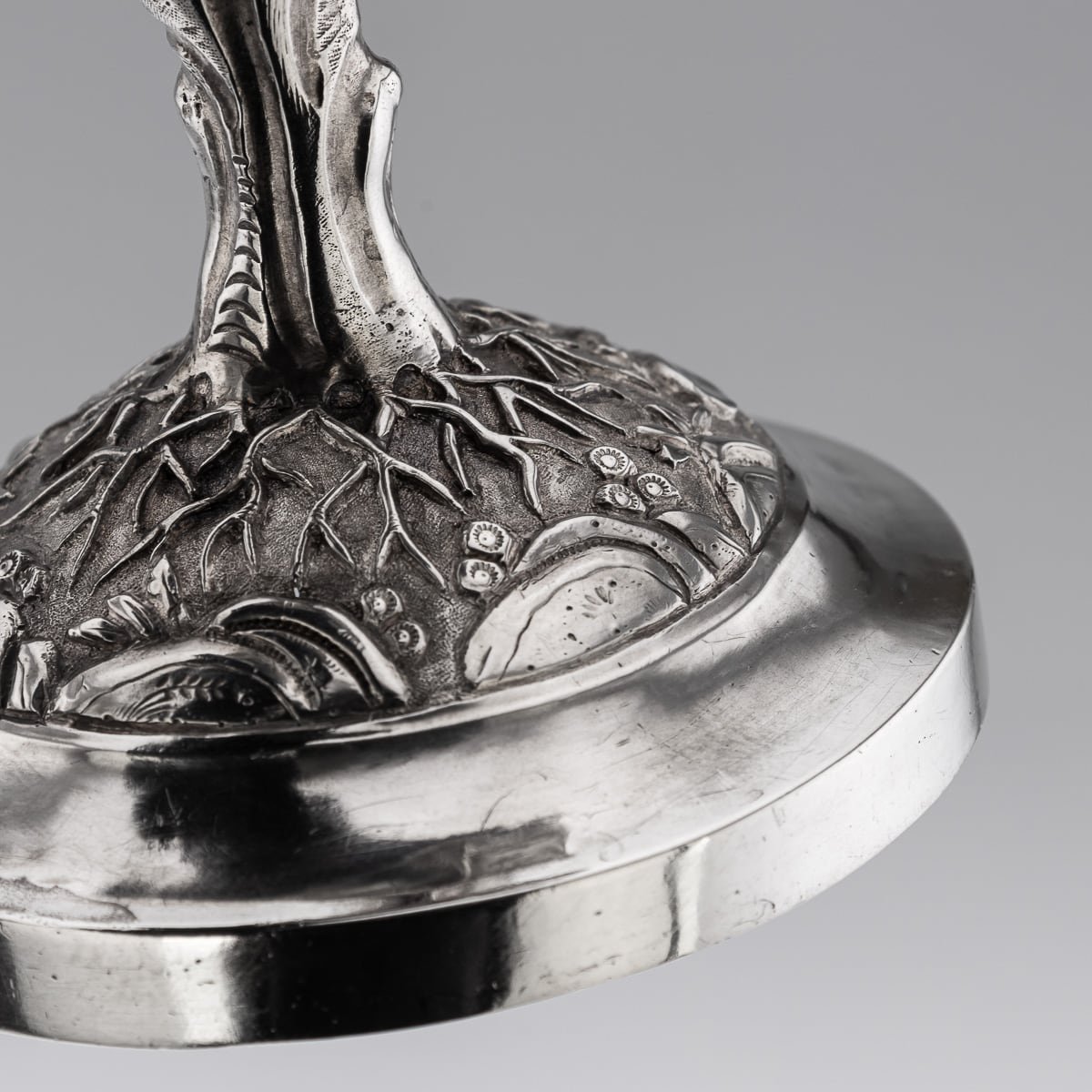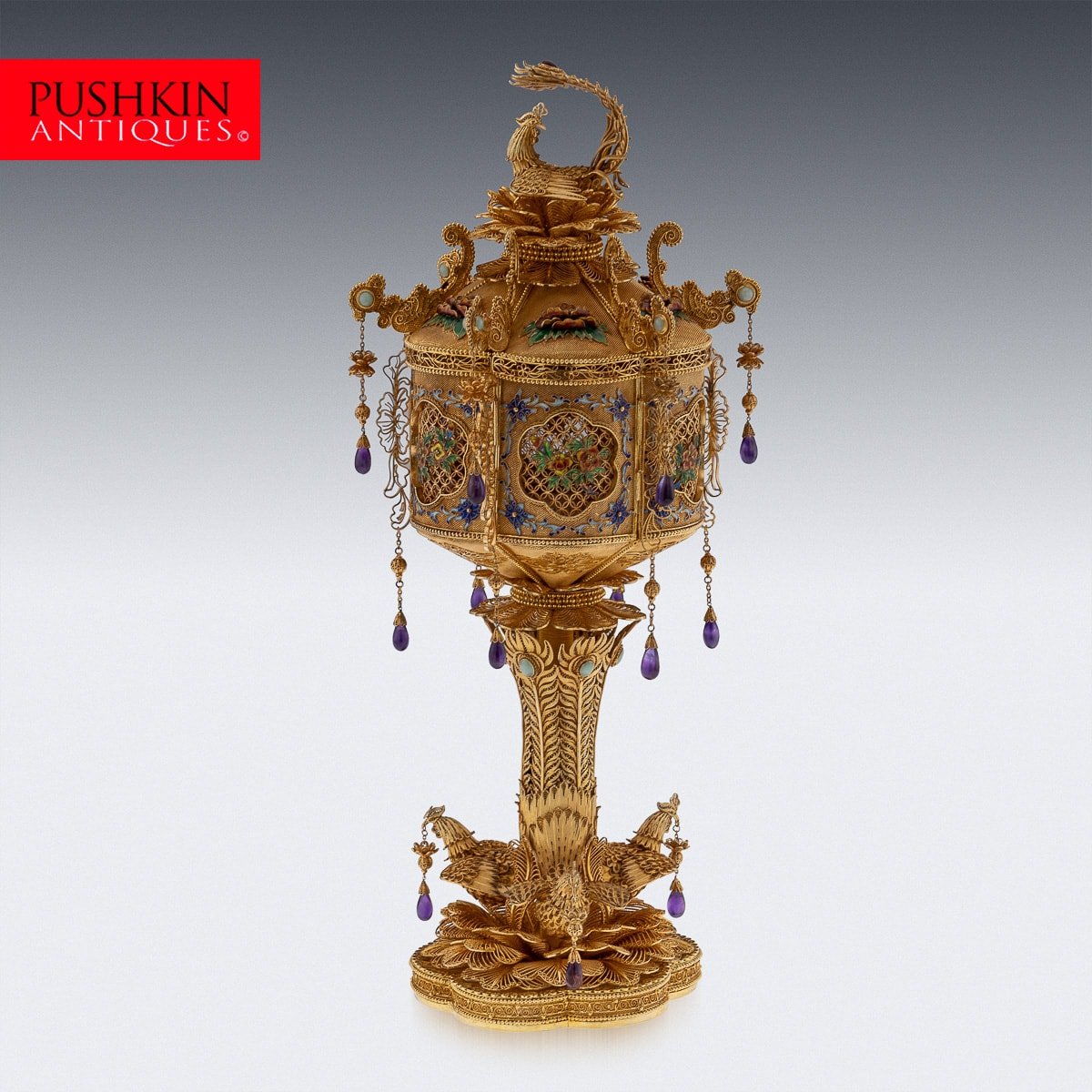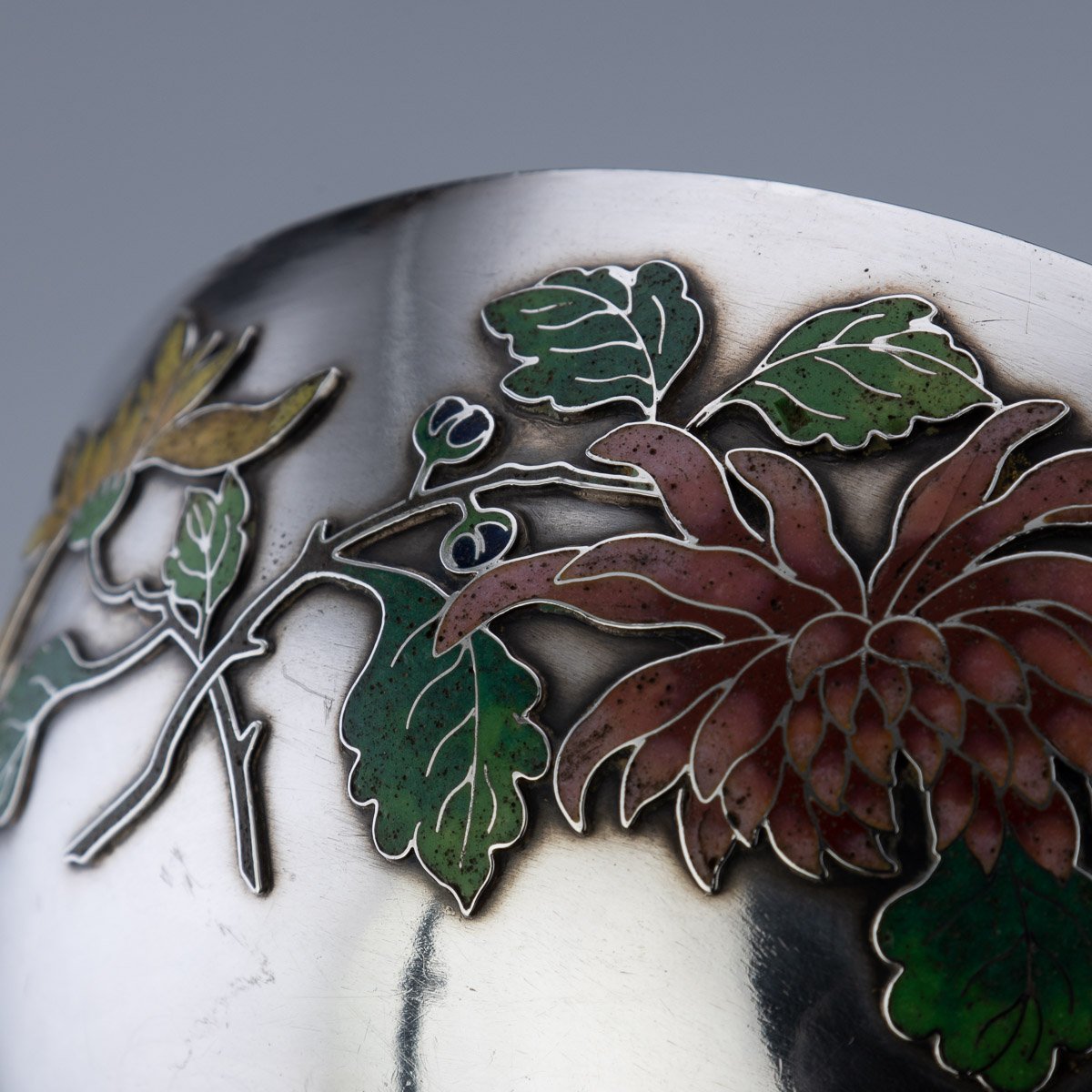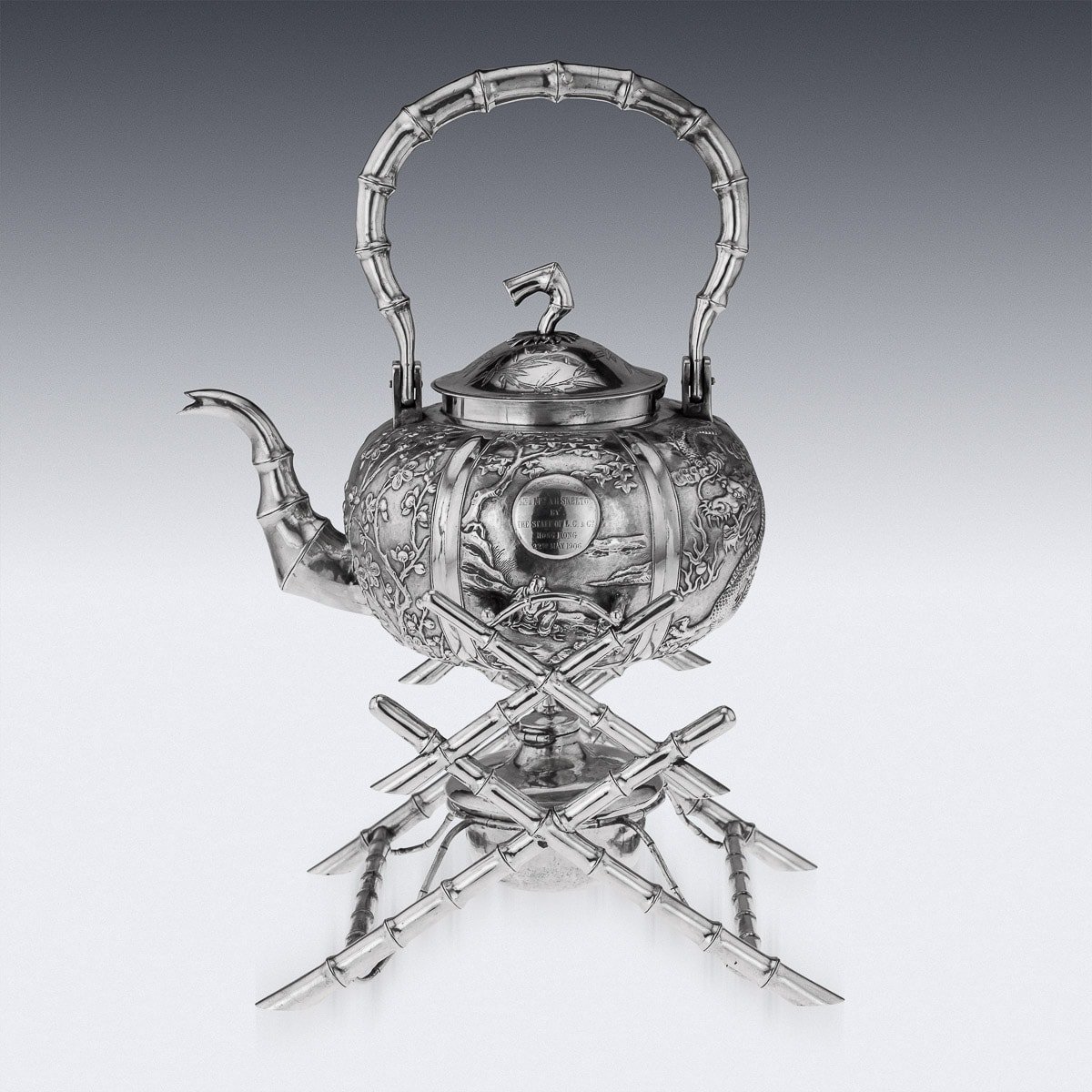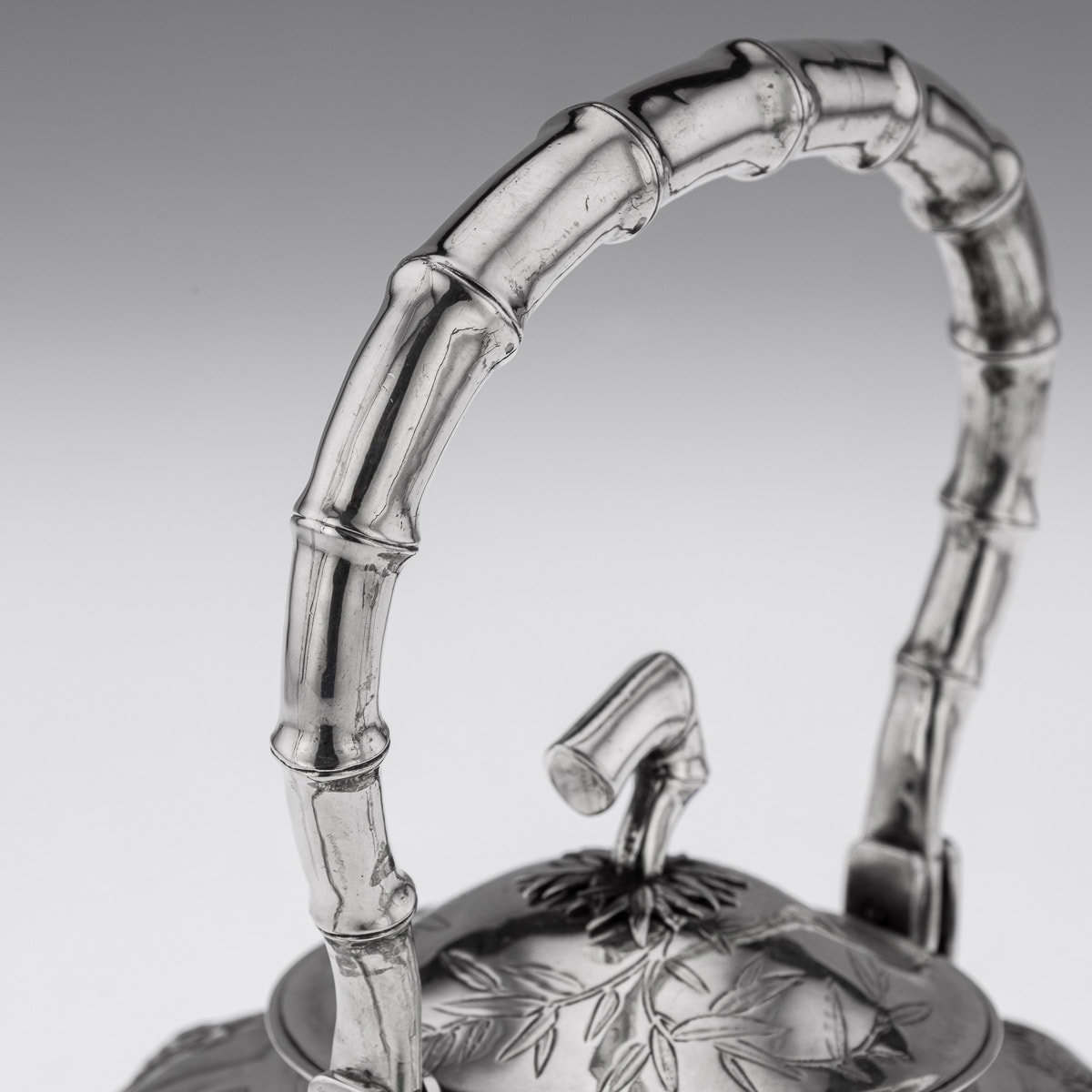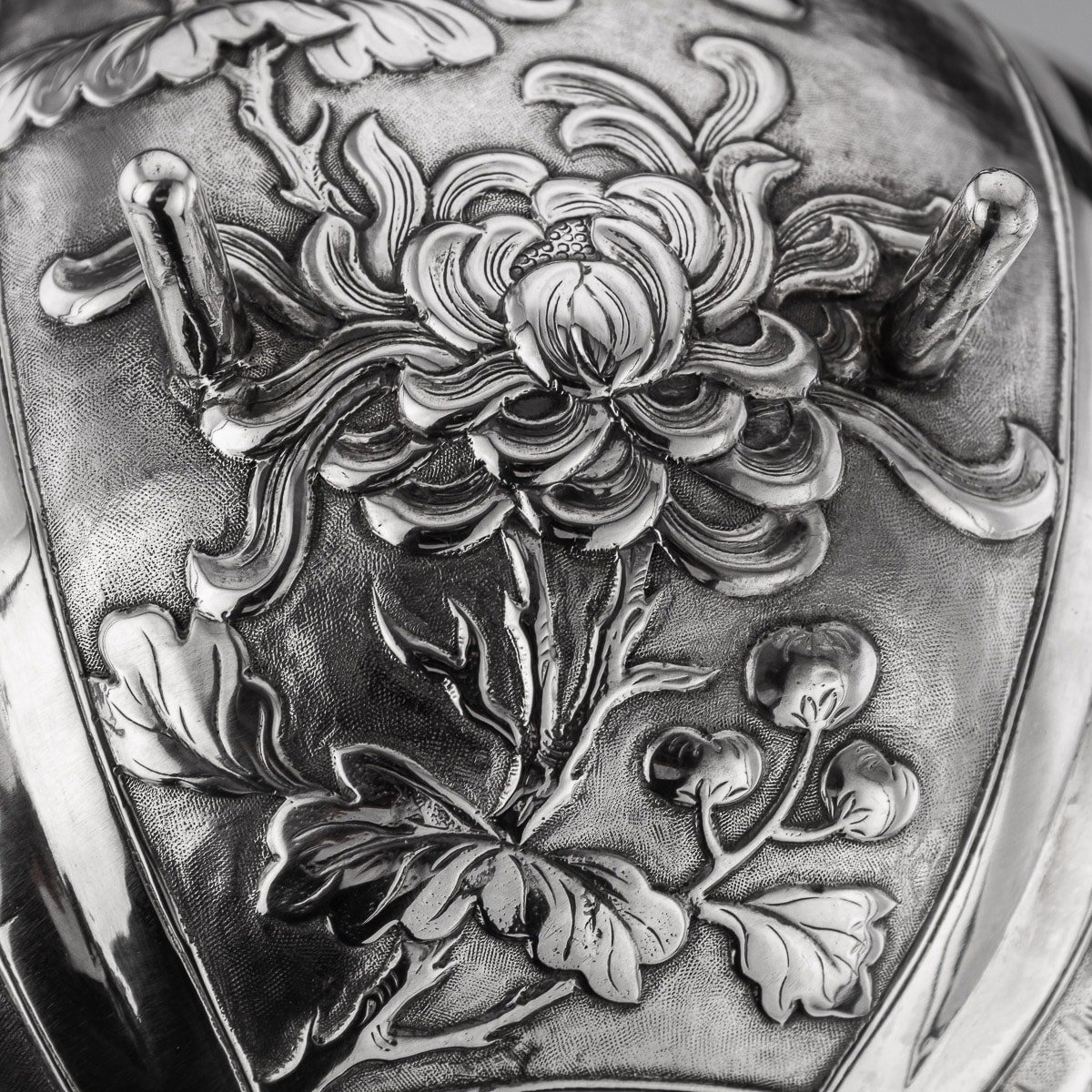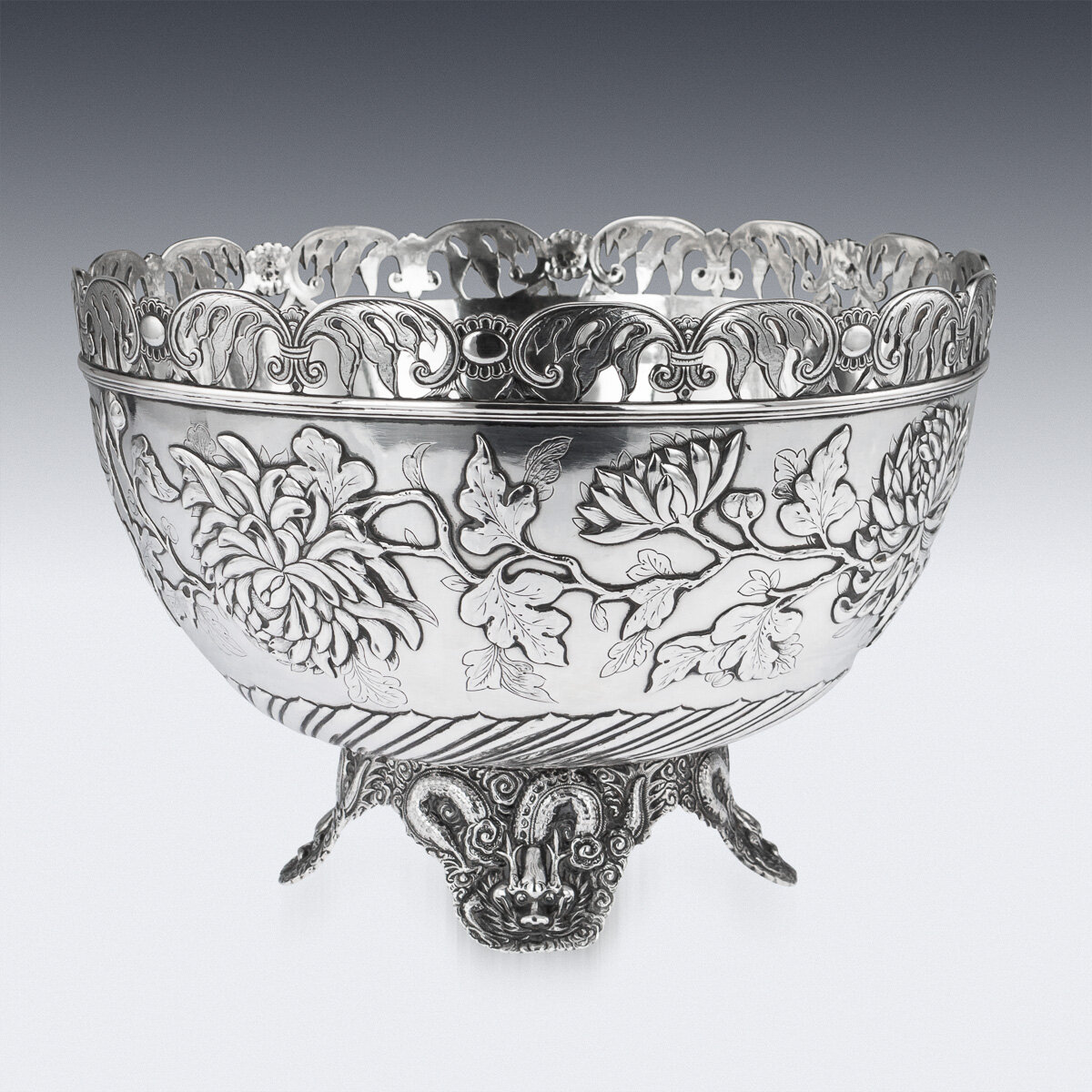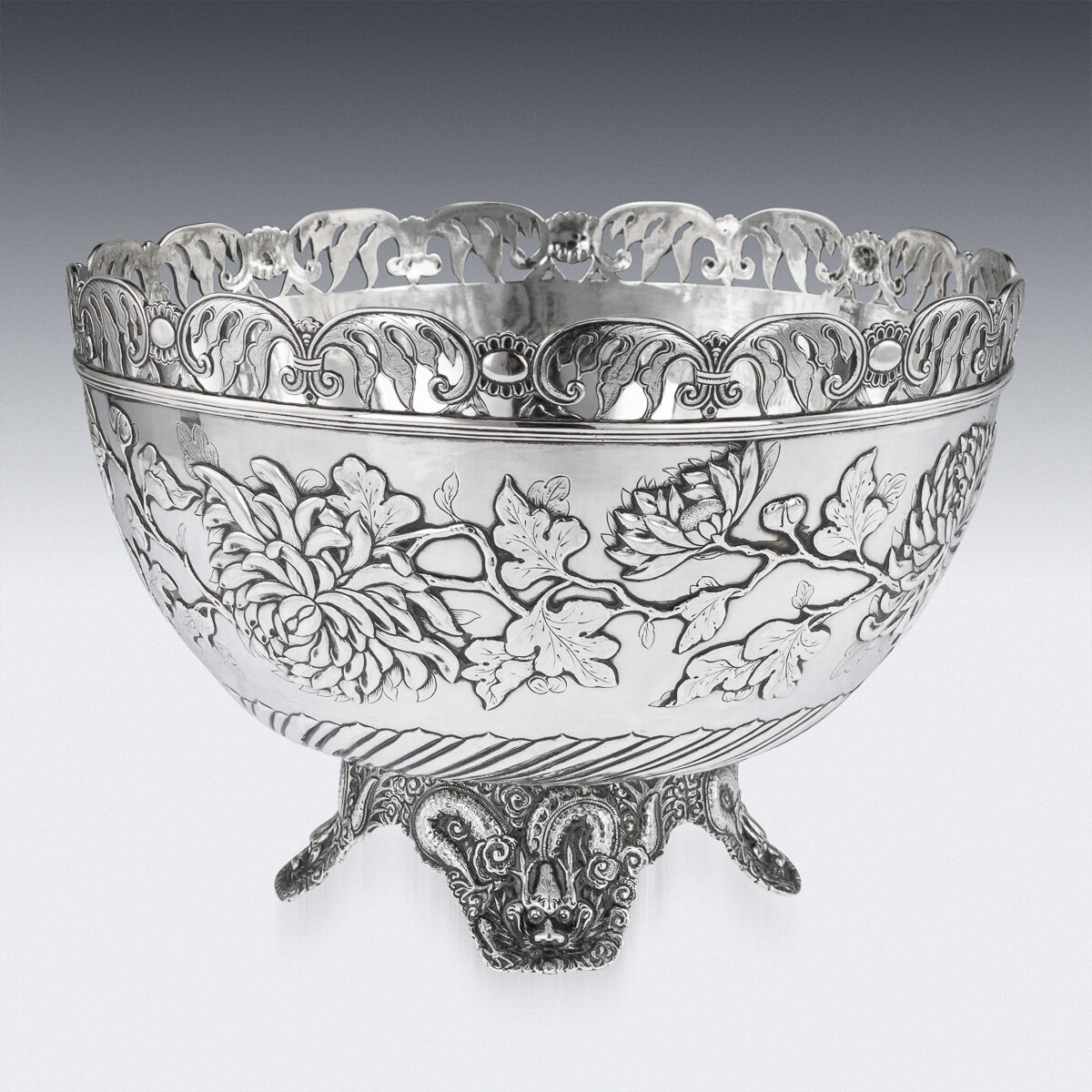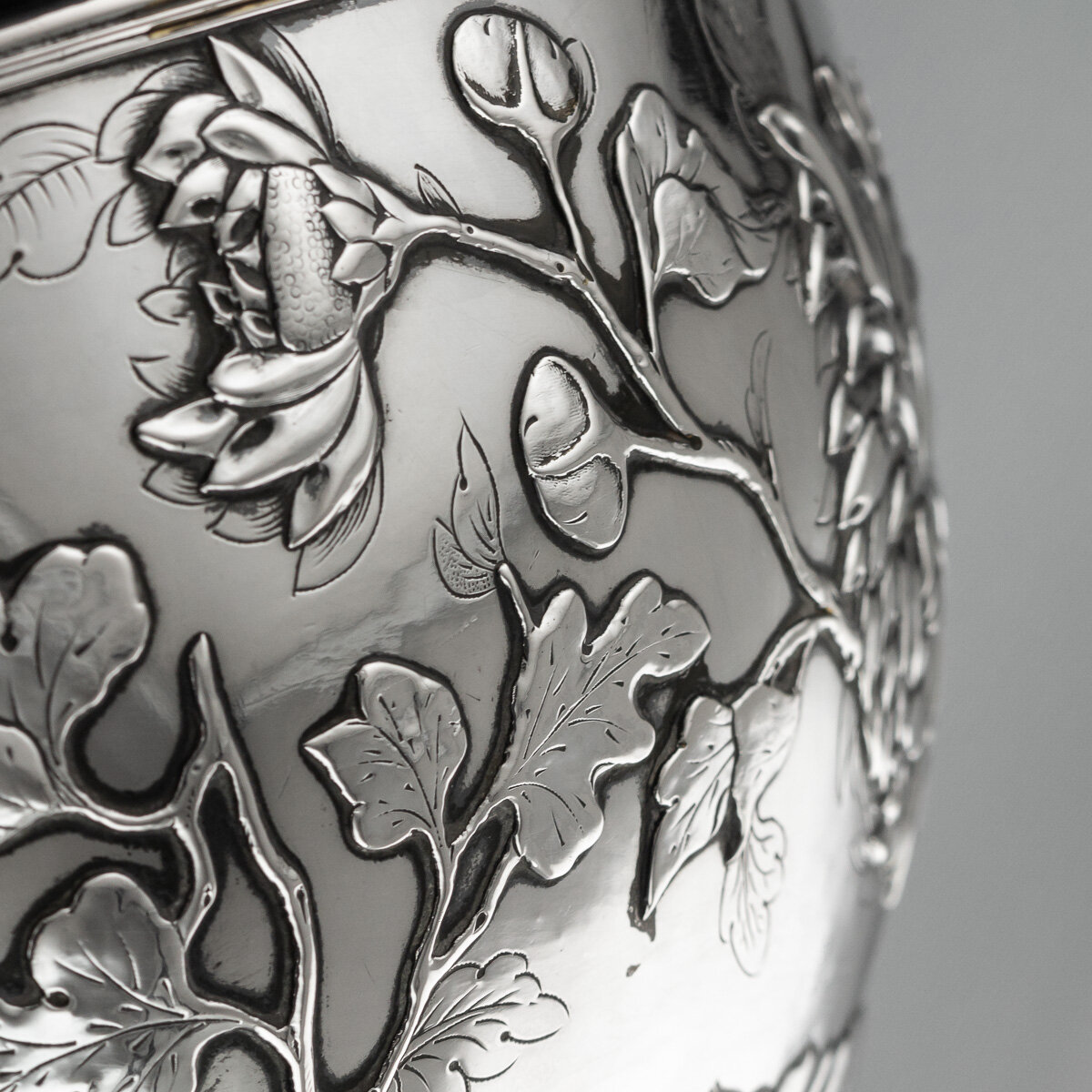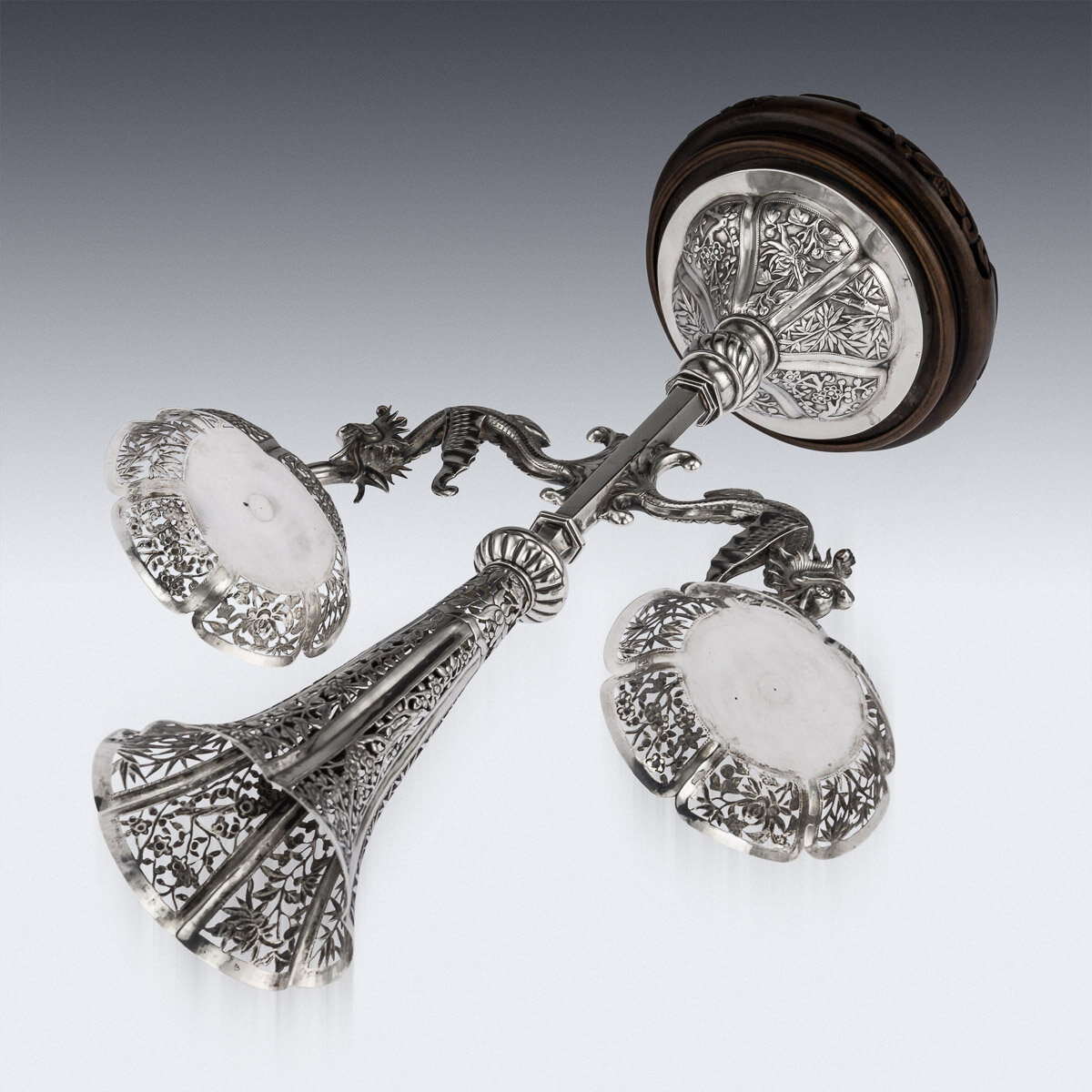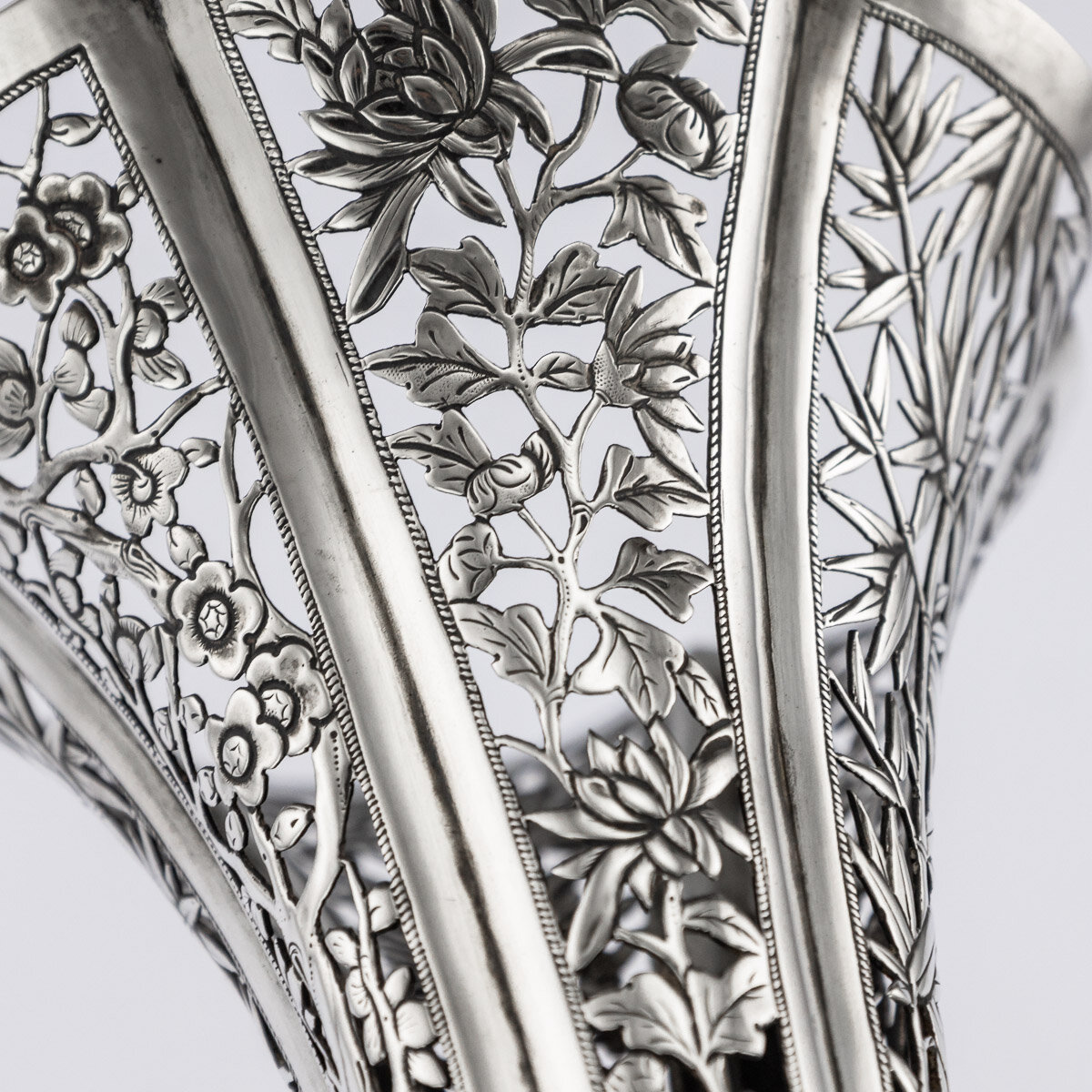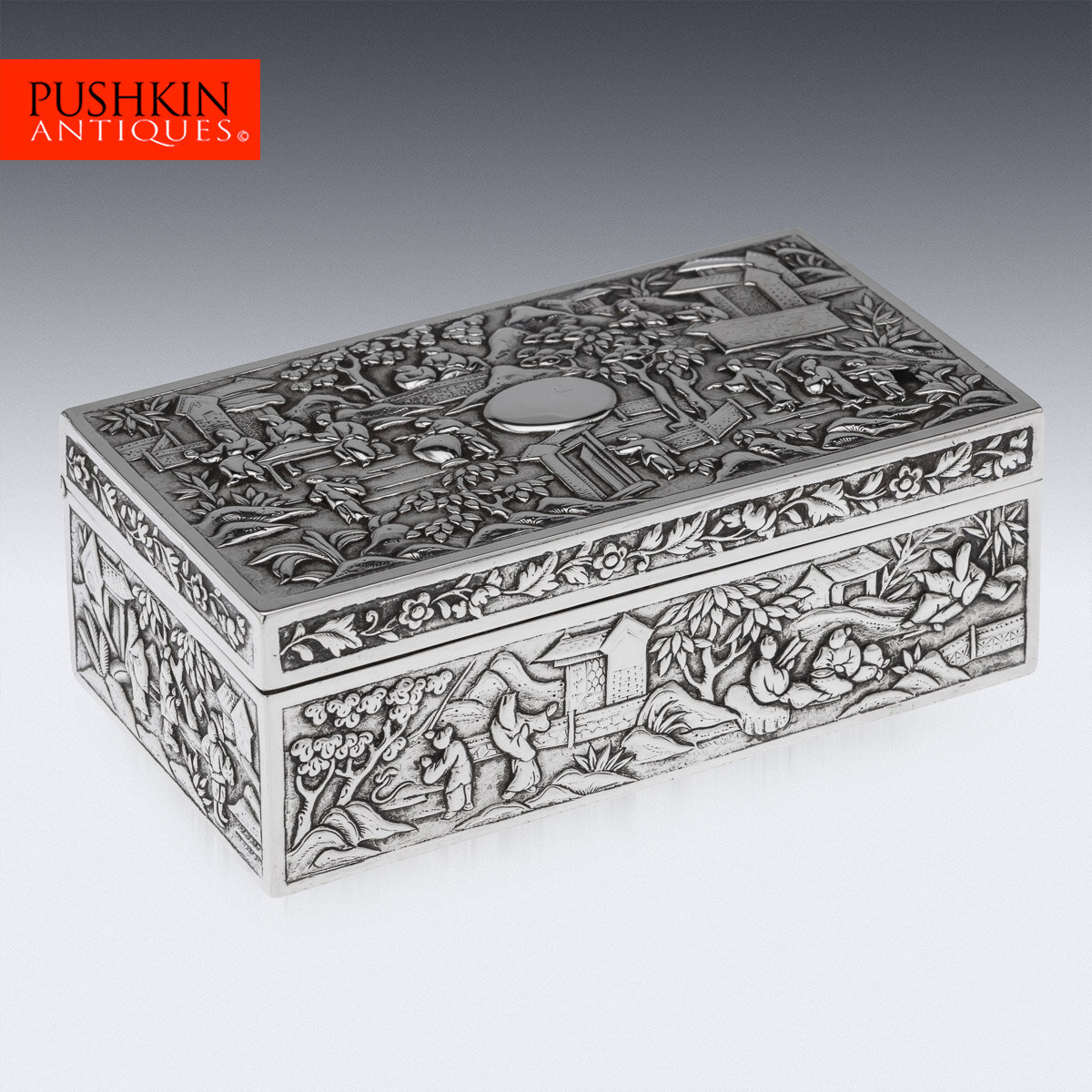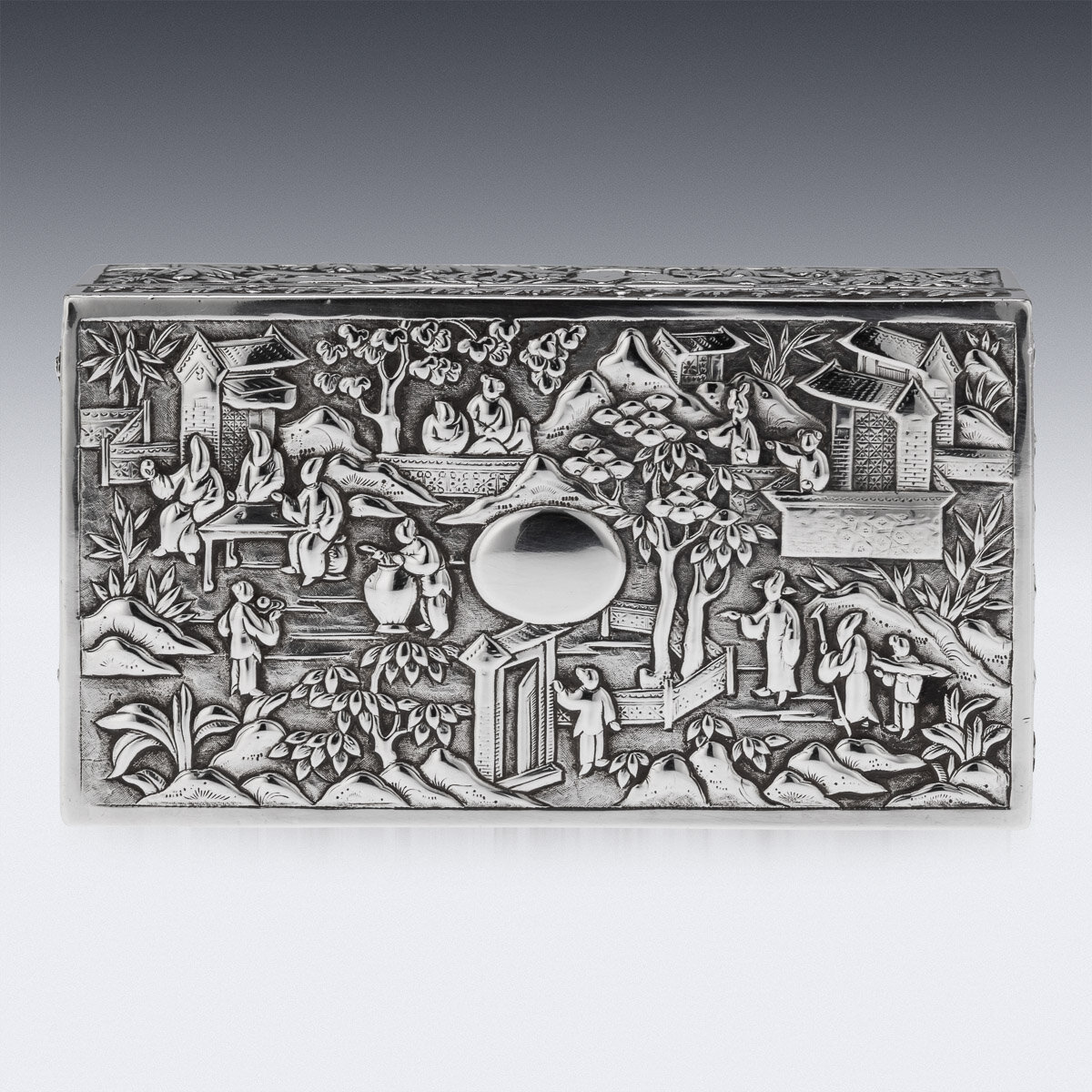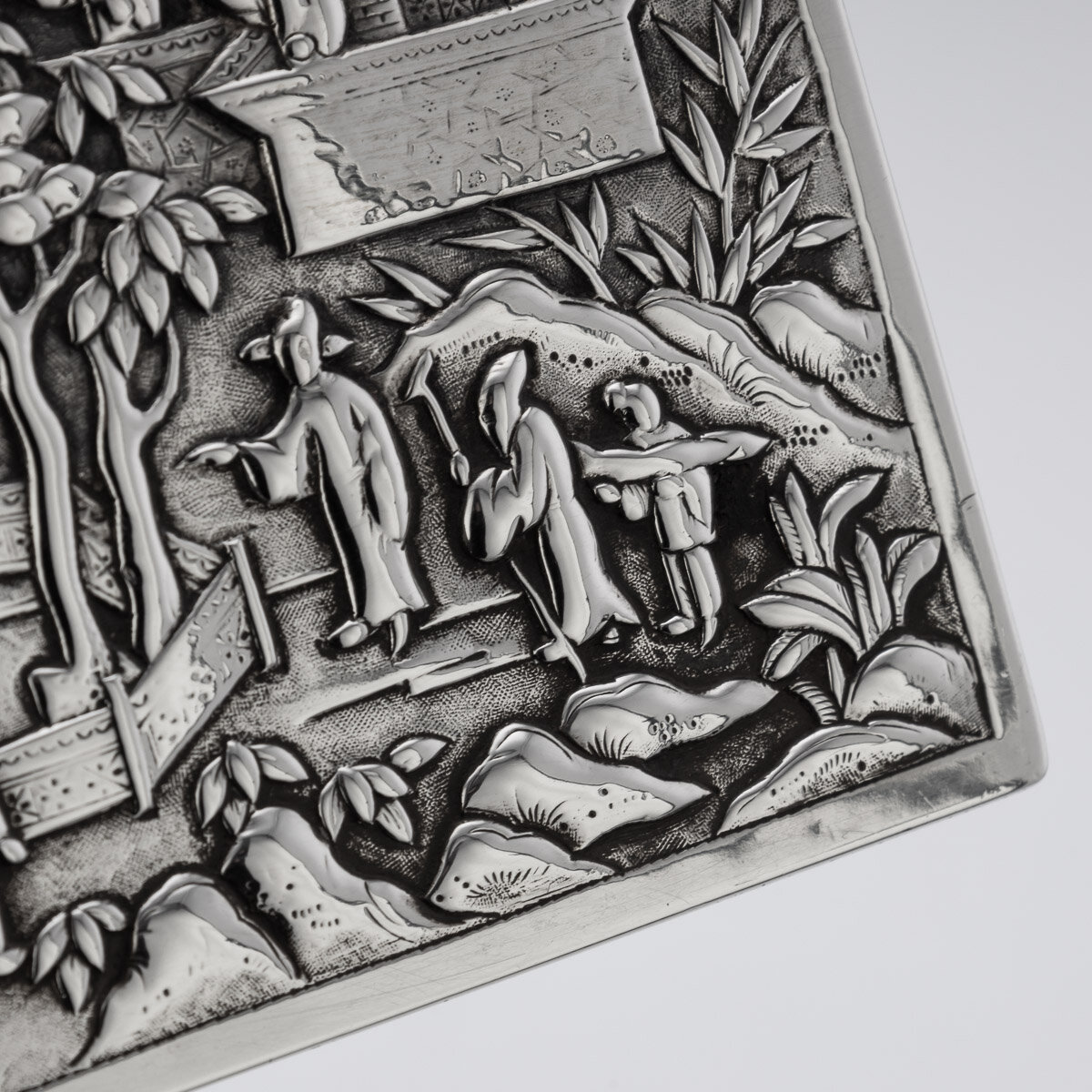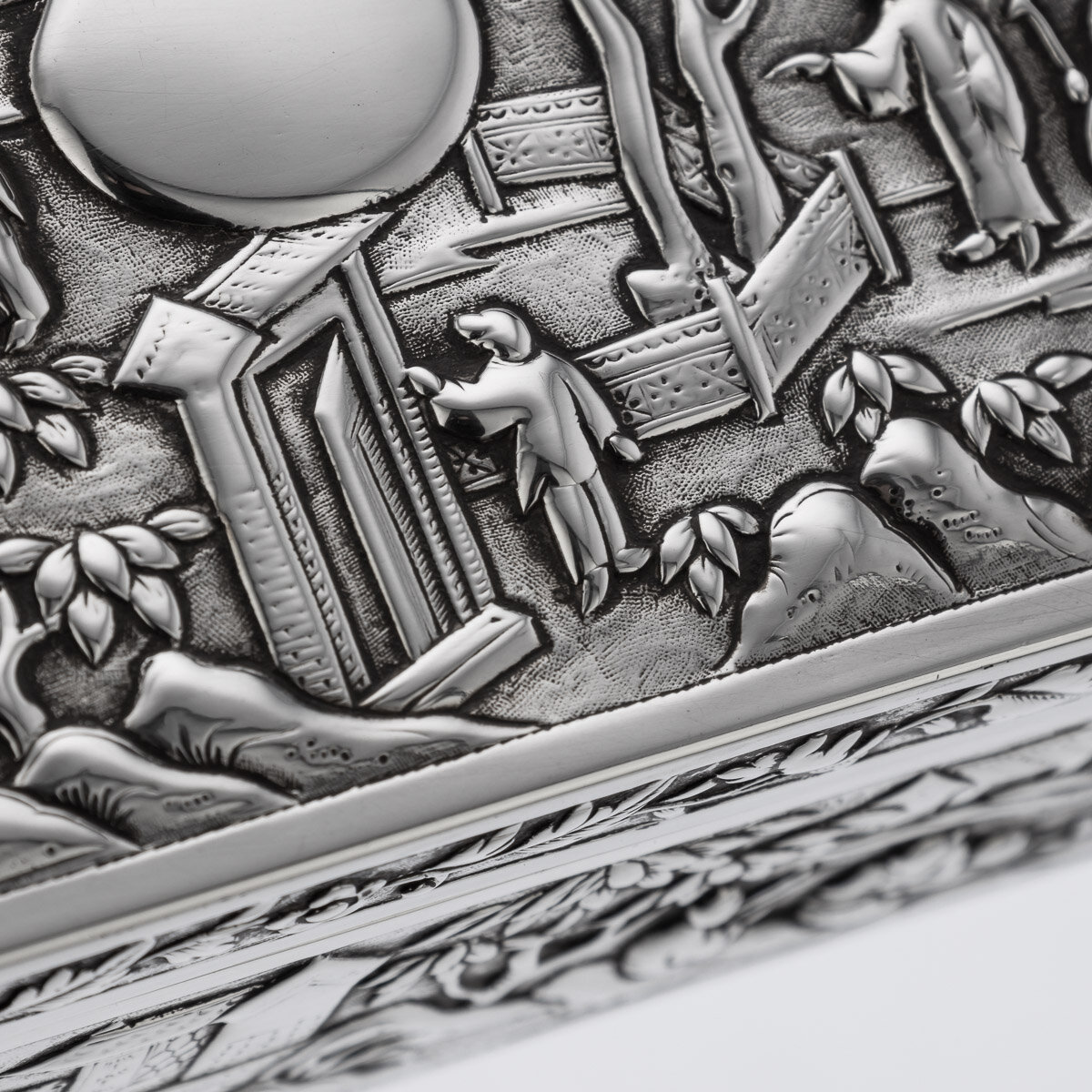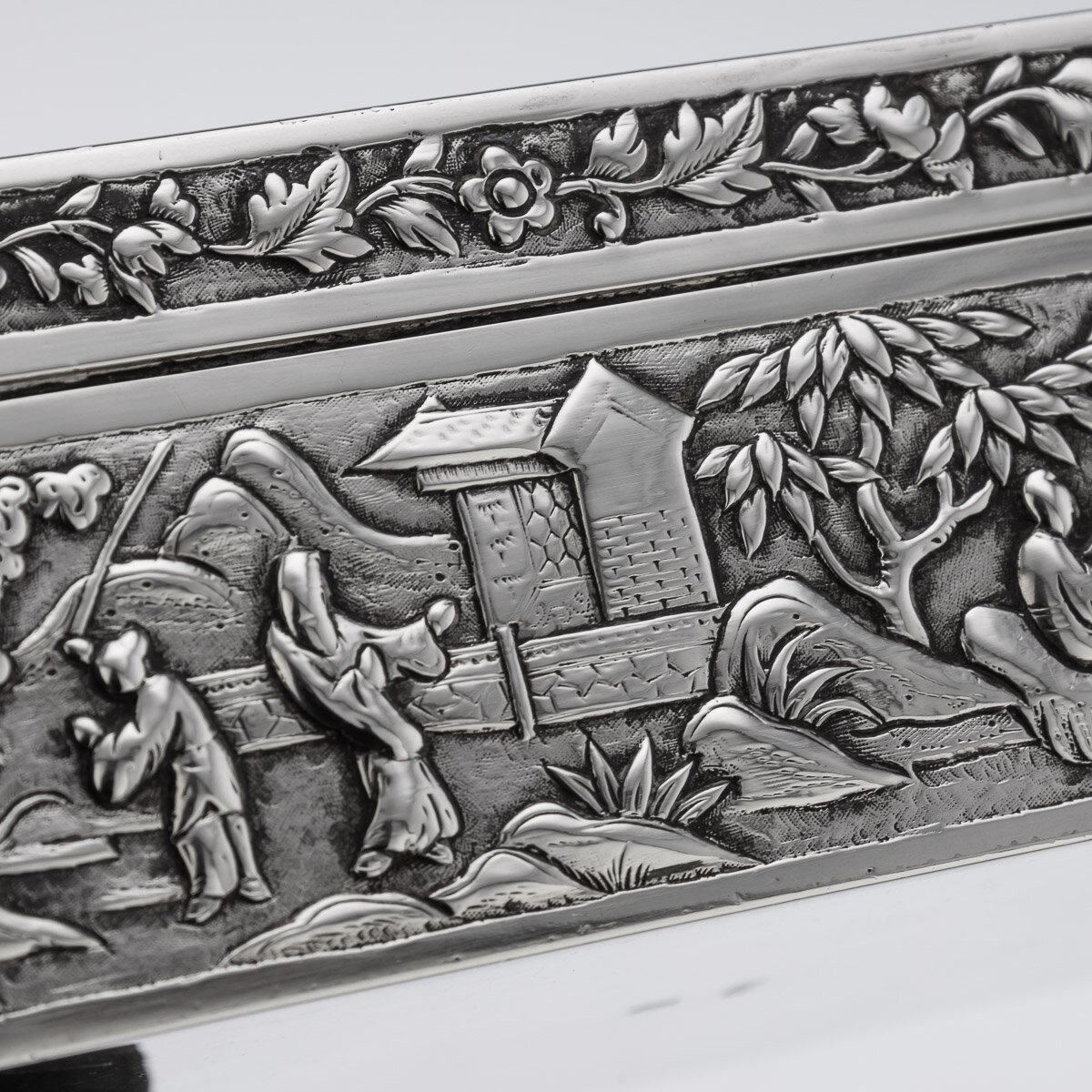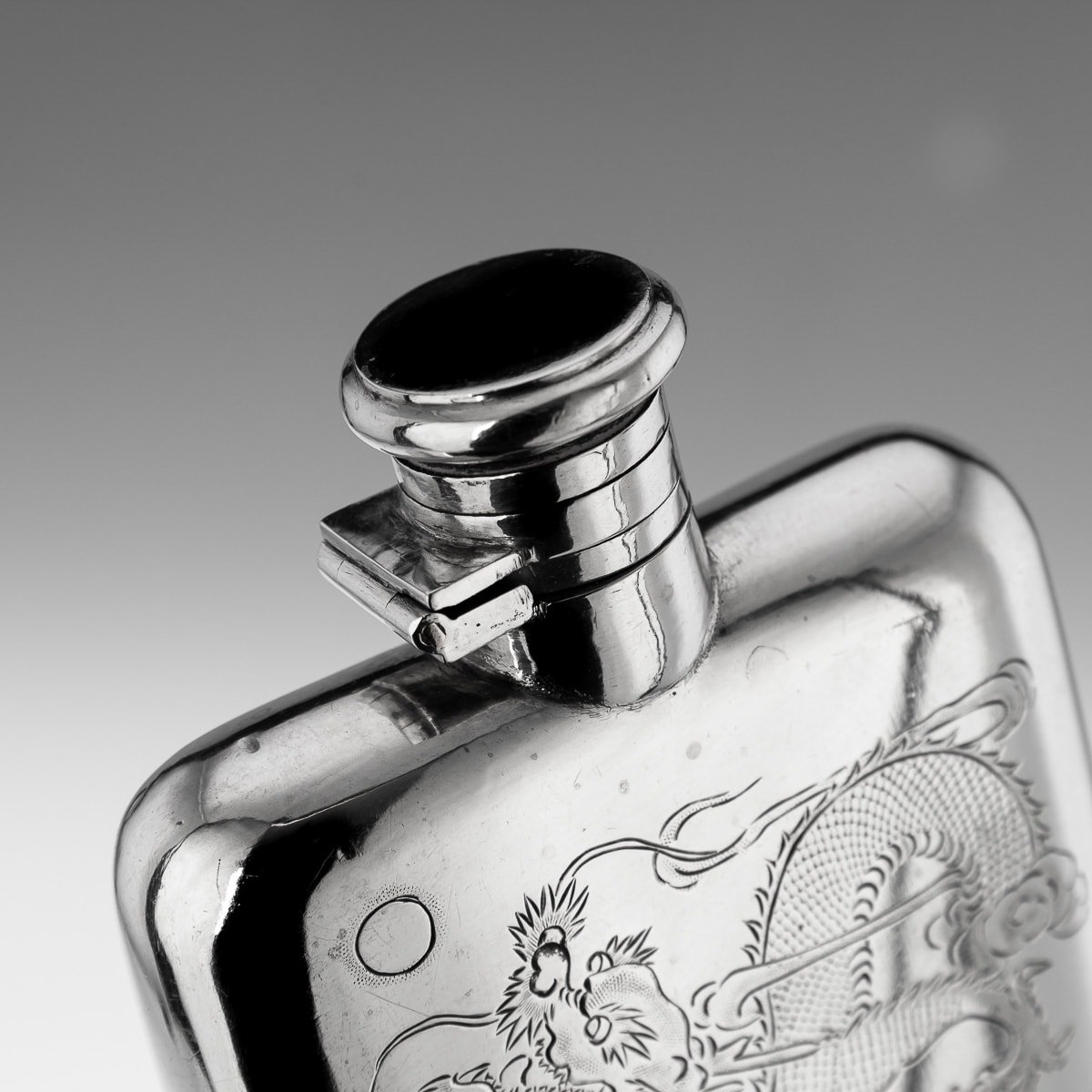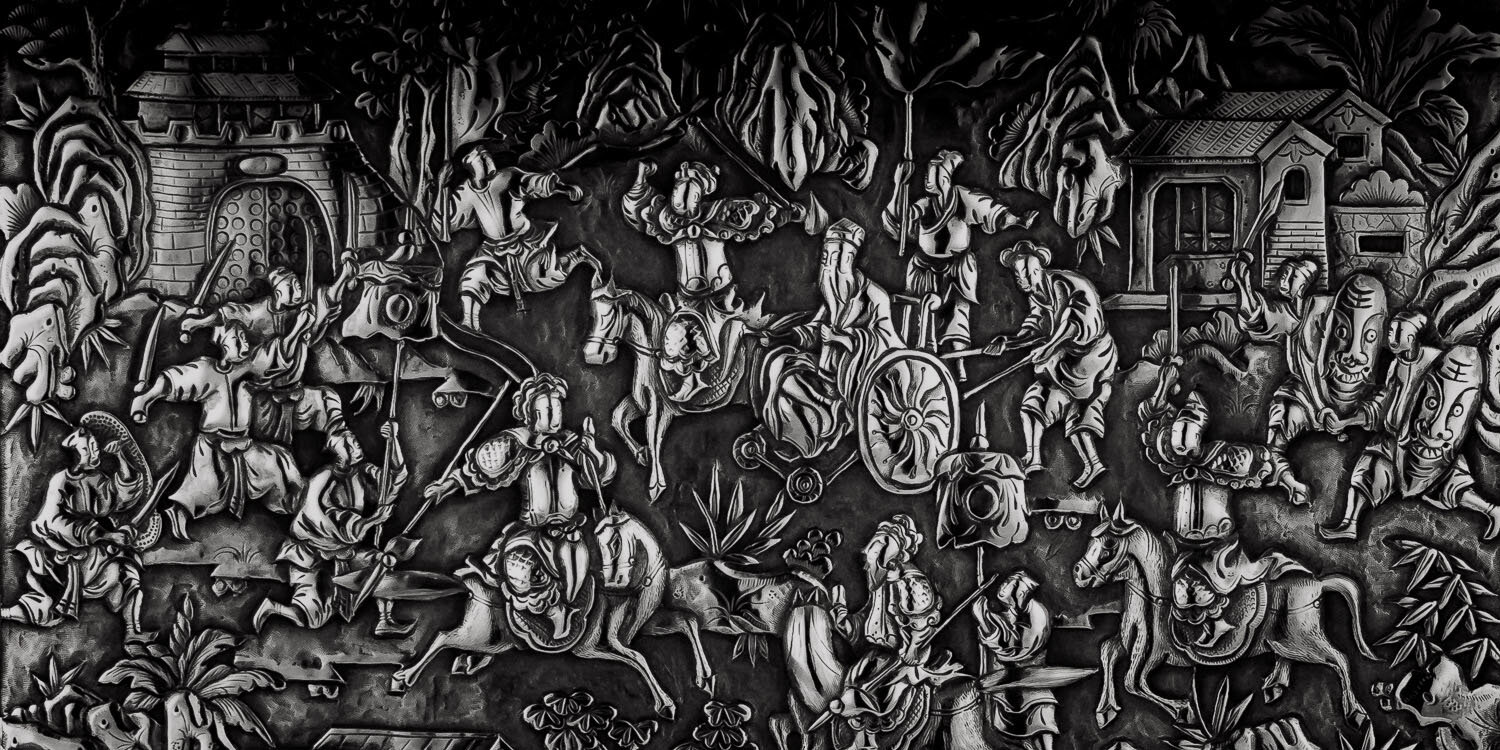
Chinese Silver
Chinese Export Silver refers to silverware produced in China from 1780 to the 1940s. It includes all silver made in China during this period, not just pieces for Western markets. The production is divided into four periods: Formative China Trade (1685-1757), Early China Trade (1757-1842), Late China Trade (1842-1895), and Post-China Trade & Republic (1895-1940).
In the Formative and Early China Trade periods, Canton-based workshops crafted silver in neoclassical American and British Georgian styles. These pieces were heavy and high-quality. Famous silversmiths like Sun Shing and Lin Chong marked their silver with pseudo-English marks. After the Treaty of Nanking in 1842, new manufacturing centers in cities like Shanghai and Hong Kong produced more diverse silver items.
By the late 19th and early 20th centuries, Chinese Export Silver featured elaborate designs with traditional Chinese motifs such as dragons and chrysanthemums. Notable silversmiths of this era include Wang Hing, Tuck Chang, Luen Wo, Cumwo and Tu Mao Xing, renowned for his dragon-themed creations. These silversmiths used Chinese chop marks combined with Latin initials. The rise of Western-style department stores in cities like Hong Kong helped solidify the global reputation of Chinese Export Silver.












